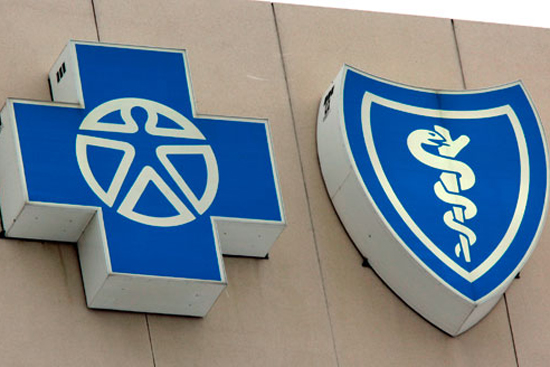Health Savings Accounts Added to BU’s Insurance Options
High deductible plan lets you save for expenses tax-free

All BU health insurance plans next year will be offered through Blue Cross Blue Shield of Massachusetts. Photo courtesy of the Associated Press
A high-deductible health insurance plan, married to a tax-free health savings account (HSA), will be offered for the first time to BU employees next year.
The new BU Health Savings Plan, the University’s least expensive health insurance plan in terms of premiums, is being introduced and the BMC Preferred Plan is being eliminated. Premiums are the amounts deducted from your paycheck for your insurance; deductibles are what you pay yourself for medical care before the insurance plan starts picking up the tab. With an HSA, you use the savings account to pay eligible out-of-pocket medical expenses, such as the cost of a physical exam, until you reach the deductible.
The University’s two other insurance options—an HMO (Network Blue New England) and a PPO—remain. But the former has been changed to include a financial incentive for employees to choose a primary care physician affiliated with Boston Medical Center. HMO subscribers who have a BMC primary care doc will have lower copayments for care than subscribers who don’t—for example, $15 versus $25 for a doctor’s office visit, and no copay versus $200 for inpatient hospital admission, including maternity.
All employees have until December 5 to enroll in a plan for next year. All plans are offered through Blue Cross Blue Shield of Massachusetts. Employees choosing to remain in their current BU plan don’t have to do anything, but those enrolled in the BMC Preferred Plan must choose a new plan. If they don’t, they will be automatically enrolled in the University’s HMO plan.
About 14 percent of employees who have University health insurance currently are in BMC Preferred, says Nimet Gundogan, Human Resources executive director of employee benefits.
The University is replacing that plan with the HSA, she says, because the latter, with its “incentives for employees to utilize BMC physicians and services, will expose a larger number of employees to BMC’s services.
“A high-deductible plan, coupled with a health savings account, is becoming increasingly prevalent,” she says, “and is unique in the way an employee accesses health care as compared to other health plan options.” According to the New York Times, more than 10 million Americans last year enrolled in such plans.
Yet the University and outside experts caution that HSAs may not be for everyone. Generally speaking, HSAs work best for healthy people who expect few medical bills. A chart comparing all three plans’ premium costs is available here. See a chart comparing annual deductibles and other features of the plans here.
The aim of HSAs, created by the federal government in 2003, is to cut health care costs by making workers responsible for, and thus more careful stewards of, their medical spending. The premiums are low, and you can put pretax dollars (deducted from your paycheck and thus earning a tax deduction) into your HSA; for next year, BU employees can put up to $2,600 in their University HSA for single coverage and $5,750 for family coverage. You pay no tax on earnings on, and eligible medical withdrawals from, your HSA, and money in the account rolls over from year to year and can also be taken with you if you go to another job outside BU.
If you open your HSA with Fidelity Investments, the University will deposit $500 in the account to start you on your way.
On the downside, illness or injury can leave you paying that steep deductible ($1,500 for employee-only coverage and $3,000 for family coverage, assuming you use a network doctor. Those deductibles double out of network). You also need to save every medical receipt to prove you used money from your HSA for qualified expenses; if you use the money for an ineligible purpose, you can lose the tax advantage.
Information meetings are being held on both campuses about the changes; a schedule is available online.

Comments & Discussion
Boston University moderates comments to facilitate an informed, substantive, civil conversation. Abusive, profane, self-promotional, misleading, incoherent or off-topic comments will be rejected. Moderators are staffed during regular business hours (EST) and can only accept comments written in English. Statistics or facts must include a citation or a link to the citation.